High inflation keeping families under pressure
With demand running hot and supplies too low, Labor’s fiscal splurge risks higher rates.
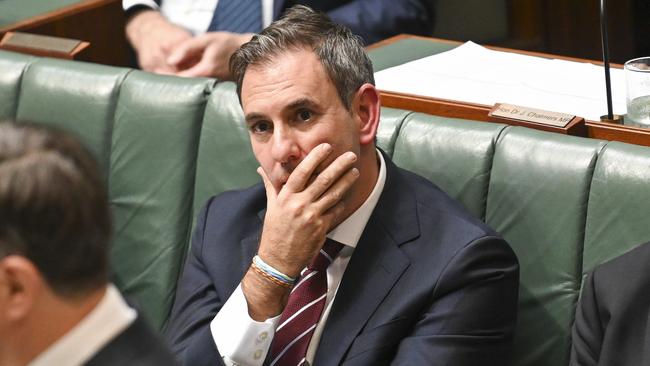
Growth in gross domestic product in the year to March was 1.1 per cent, the weakest outcome (outside of the pandemic) since 1992. Voters are telling pollsters they’re not impressed by last month’s budget and are deeply concerned about the direction of the national economy. Consumer sentiment is dire because of bill shock and many economists believe government spending splurges will only make things worse.
Enter Jim Chalmers, alleging those who question his fiscal strategy are warriors for a “slash and burn” approach. “The economy’s weak, the economy’s soft, and people are under pressure,” the Treasurer said on Thursday. “And that’s why the budget is carefully calibrated to respond to those pressures that people are under and our economy’s under.”
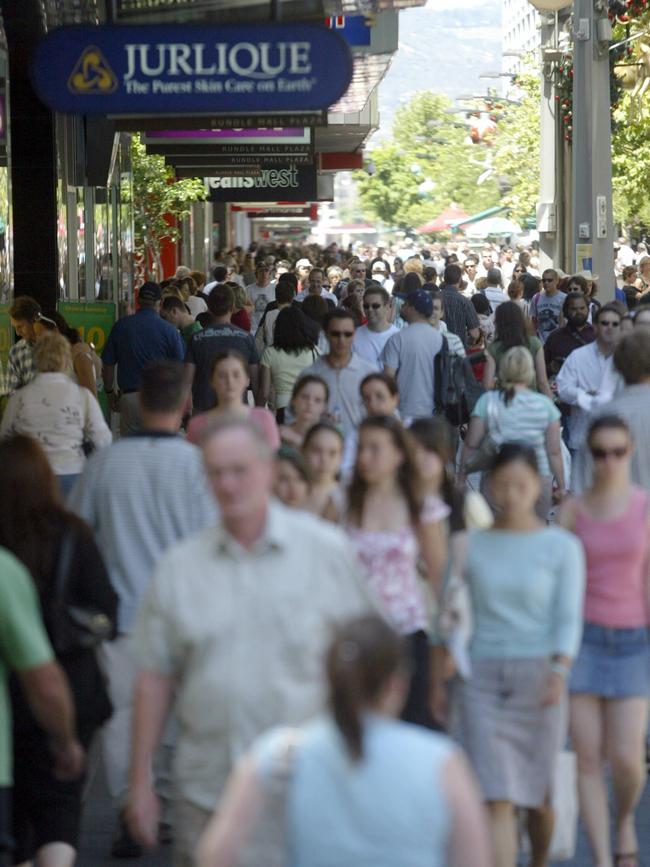
Usually in this scenario the Reserve Bank would be cutting interest rates to get people spending, but we don’t have a lack of demand. We have the opposite problem, in that an economy that has generated 820,000 jobs in the two years since Anthony Albanese won the election still can’t produce the amount of goods and services that people are buying.
That’s why we have persistent inflation, which is too high on several measures, and which the RBA has been trying to subdue for the past two years by hiking its cash rate. That monetary tightening increases borrowing costs and encourages people to save rather than spend.
High inflation hurts everyone – shoppers and savers, workers and retired people, although much depends on stage of life, spending patterns and accumulated wealth. The main sources of price pain at present are essentials such as insurance, rent, energy and medicines.
According to Challenger chief economist Jonathan Kearns, while household incomes over the year to March grew by 6.7 per cent, after taking out higher tax and interest payments, disposable income was just over 5 per cent higher across the year.
“But the big kicker was inflation, which wiped out almost all of this nominal growth in disposable incomes,” Kearns says. “Population growth took off almost 2.5 per cent, leaving real household income per capita down 1.9 per cent. It’s not surprising then that households are feeling morose.”
Polling by JWS Research found 80 per cent of people questioned for its True Issues survey put cost of living in their top five issues for government attention, which was 22 points clear of the next area, hospitals, health and ageing. “Cost of living is like nitrogen in the atmosphere, it’s just everywhere as a concern,” JWS Research’s Tom Cameron tells Inquirer.
Yet the economy keeps limping on because of a population boom through 2.4 million work-ready foreigners here on temporary visas, near-record levels of government spending, and the long tail of free and cheap money pumped into households by policymakers at the height of the pandemic.
Insipid growth and high inflation. Sounds like stagflation, right? That’s wrong, according to RBA governor Michele Bullock, because our labour market has been so remarkably strong and the headline jobless rate of 4.1 per cent is still below what the central bank’s economists estimate is full employment.
Before Wednesday’s testimony at Senate estimates, Bullock had been in self-imposed communications quarantine. For 11 weeks, since a post-meeting press conference in March, she had made a solitary public appearance, which was after last month’s board decision to keep interest rates on hold. The last move by the board was in November, when the cash rate was raised to 4.35 per cent.
This is a delicate period for the RBA board’s policy decisions. The data is often in conflict and there are long and variable lags in the way interest rates affect the economy. Adding to the uncertainty are developments beyond our shores and the effect of federal and state taxing and spending decisions. Plus the student-led population surge has caught officials on the hop, time and again.
Treasury secretary Steven Kennedy concedes his department’s performance on forecasting migration has been poor. In the 2022-23 budget, delivered by the Coalition in March 2022, net overseas migration for that financial year was forecast to be 180,000; it came in at a record 528,000. So the population boffins missed the migration call by 66 per cent (although when they had another crack in May last year, with eight weeks of the fiscal year remaining, they managed to contain the error to 24 per cent).
As the RBA board sits tight, it’s little wonder Bullock has stayed out of range. The message remains the same. The country is on the “narrow path” – that is, inflation falling back to the 2-3 per cent target range by the end of 2025, without a recession – and when it comes to the next move on interest rates “we are not ruling anything in or ruling anything out”.
“But if it turns out, for example, that inflation starts to go up again or it’s much stickier than we think (and) we’re not getting it down, we won’t hesitate to move and raise interest rates again,” Bullock told parliament.
“In contrast, if it turns out that the economy is much weaker than expected, that puts more downward pressure on inflation – then we’ll be looking to ease.”
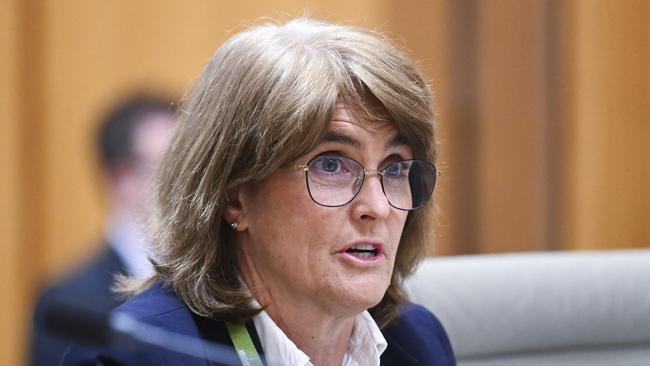
Westpac chief economist Luci Ellis argues that at some point, the RBA board must reduce its contractionary stance and return rates to something closer to “neutral”. “Otherwise inflation would eventually fall to below the target range,” Ellis tells Inquirer. “Given monetary policy works with a lag, rate cuts need to start before inflation has returned to target.”
She says if things turn out as expected, a forward-looking RBA would want to start cutting rates by about November. But there are a lot of data releases, new money flows and big moves for the central bank to monitor before then.
This week’s decision by the Fair Work Commission to give minimum wage earners a 3.75 per cent pay rise was seen by many as hitting the industrial “sweet spot”. While experts are predicting wage growth has peaked, with inflation heading down workers’ purchasing power will rise.
The redesigned and rebranded “cost of living” tax cuts, worth $23bn in the first year, take effect at the start of next month. Chalmers doesn’t think there’s an inflation risk from people rushing out to spend the tax cuts, which he says are worth an average of $36 a week. “Some people will spend them, some people won’t, but I think they’ll arrive at precisely the right time,” he told Radio National Breakfast.
But Ellis cautions there are plenty of things that could push things off track from Westpac’s base case, which is not that far from the consensus of market economists. The main thing that would cause the RBA to shift its first rate cut later is inflation remaining sticky above the target range. For instance, as Ellis wrote in a note last week, “it’s possible that consumer spending recovers more than expected in response to tax cuts and other fiscal support measures, and so pressure on firms to limit price increases wanes”.
A more plausible and pessimistic scenario is what Ellis calls the “grumpy hawk”, where domestic demand and consumption remain soft but supply-driven inflation in key areas such as housing, insurance, health and energy, in particular, keeps inflation too high for the RBA board’s comfort. Such a scenario would see weak consumer sentiment and a softening labour market collide with difficulties expanding supply in these key sectors.
While the headline inflation rate is 3.6 per cent (and trending down), the various measures of prices in Wednesday’s national accounts (called deflators) show there’s a palpable inflation pulse. For instance, prices for consumer spending rose by 4.7 per cent in the year to March. As in other countries, goods inflation is falling but services inflation is elevated.
EY chief economist Cherelle Murphy argues “inflation is not where it needs to be, even as the economy flatlined” in the early months of this year. “Therefore, Australians can continue to expect interest rates to remain higher, for longer,” she said after the GDP numbers were published.
Murphy points to the surge in demand for travel and accommodation around the Melbourne Grand Prix and the Taylor Swift and Pink concerts as “creating an unwelcome pressure point”.
“Although the Reserve Bank looks through one-off events, it doesn’t ignore solid demand indicators,” Murphy says. She argues tax cuts, further cost-of-living measures and positive real wages growth will help consumers. Consumption may even pick up a little.
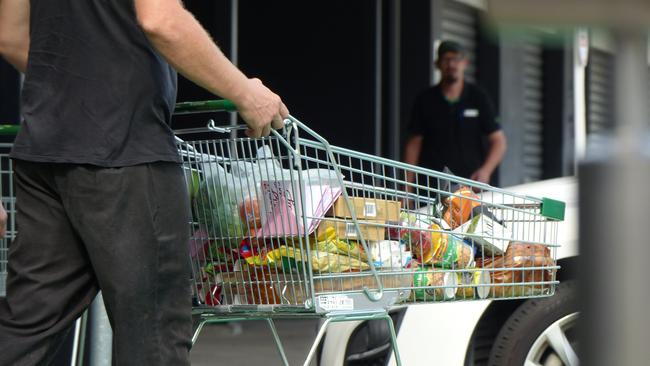
“Until the sequins have been cleared off the floor, we can expect the Reserve Bank to hold monetary policy tight with the cash rate unlikely to change for some time,” Murphy says. “The Reserve Bank will need more evidence that inflation is falling before it cuts rates. These figures – despite the headline softness – suggest it must remain vigilant.”
In a special post-budget edition of True Issues, only 27 per cent of 1000 voters agreed that federal government spending was well targeted and generally not contributing to inflation and cost-of-living pressures, while 34 per cent disagreed. Tellingly, many more people in the JWS survey believe that budget surpluses should be used to pay off debt rather than help with the cost of living.
“People are feeling the financial pressure of the immediate but [are] nonetheless very worried about the long run and the burden for future generations,” the JWS budget survey found. “Australians are overwhelmingly concerned that federal government spending is likely to place pressure on future generations.”
After two years at the helm, and three budgets down, Chalmers owns the state of the economy. So far, Australians in vast numbers aren’t blaming the Albanese government for the cost-of-living crunch. The simmering electoral issue, however, is that Labor’s fiscal dose of energy rebates for all, more social welfare spending and bigger government won’t curtail inflation. It could make it worse.
Nor, as the research shows, are voters buying the Treasurer’s sweet medicine. Will the money masters of the central bank, sweating on a clear signal that inflation has been brought to heel, see it the same way?



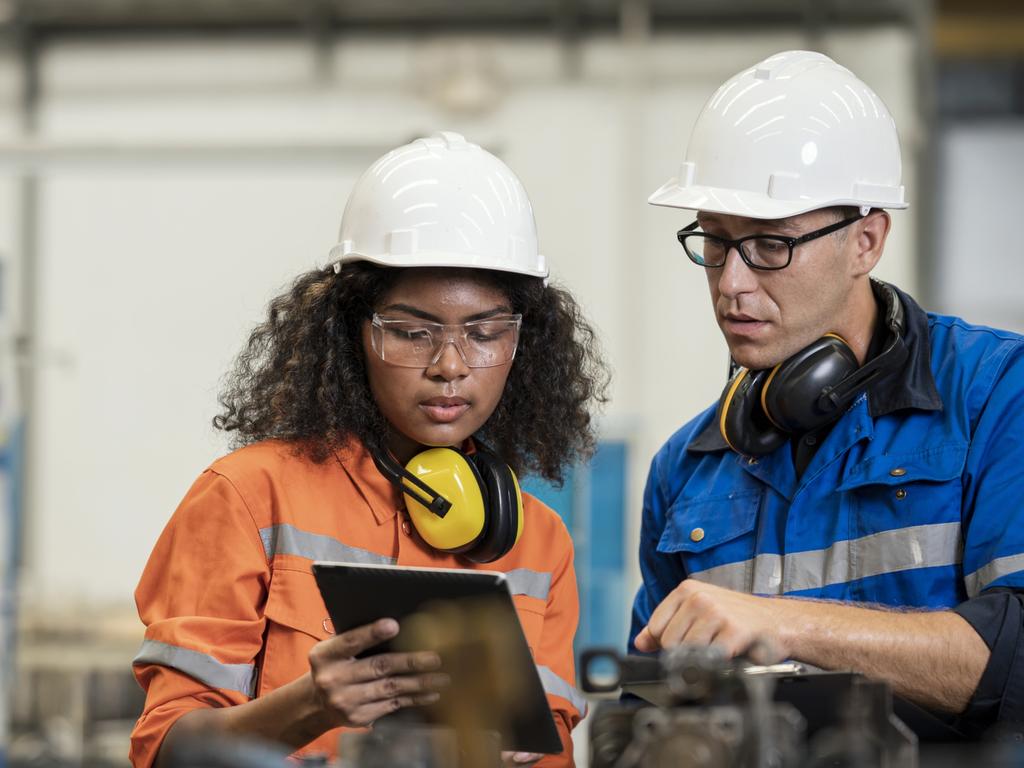




Australia’s economy is in strange and dangerous territory. There’s the grind of minuscule growth on the Statistician’s scoreboard, with per capita output shrinking for five quarters in a row and living standards being choked by interest costs, taxes and high prices.